Abstract
1 In order to gain more insight into the mechanisms behind the actions of opiate partial agonists, an analysis of the dual agonist/antagonist properties of the partial agonist, buprenorphine, was made in conjunction with in vivo binding studies on the drug in the rat. 2 Buprenorphine revealed a bell-shaped dose-response curve for antinociception peaking at approx. 0.5 mg/kg subcutaneously. It antagonized morphine antinociception at doses which normally have agonistic effects and produced maximum antagonistic effects at doses above those having prominent agonistic activity. The withdrawal precipitating potency of buprenorphine as measured in highly morphine-dependent rats was present at doses above those having agonistic activity. The entire dose-response curve for buprenorphine was shifted symmetrically to the right by the opiate antagonist, naltrexone. 3 The dose-dependent occupation of receptors in vivo by buprenorphine seemed to be almost complete over the agonist dosage range; almost no further receptor occupation over the antagonist range was seen. 4 The possibility is discussed that site-to-site receptor interactions leading to cooperativity of effect may be the best explanation of these results.
Full text
PDF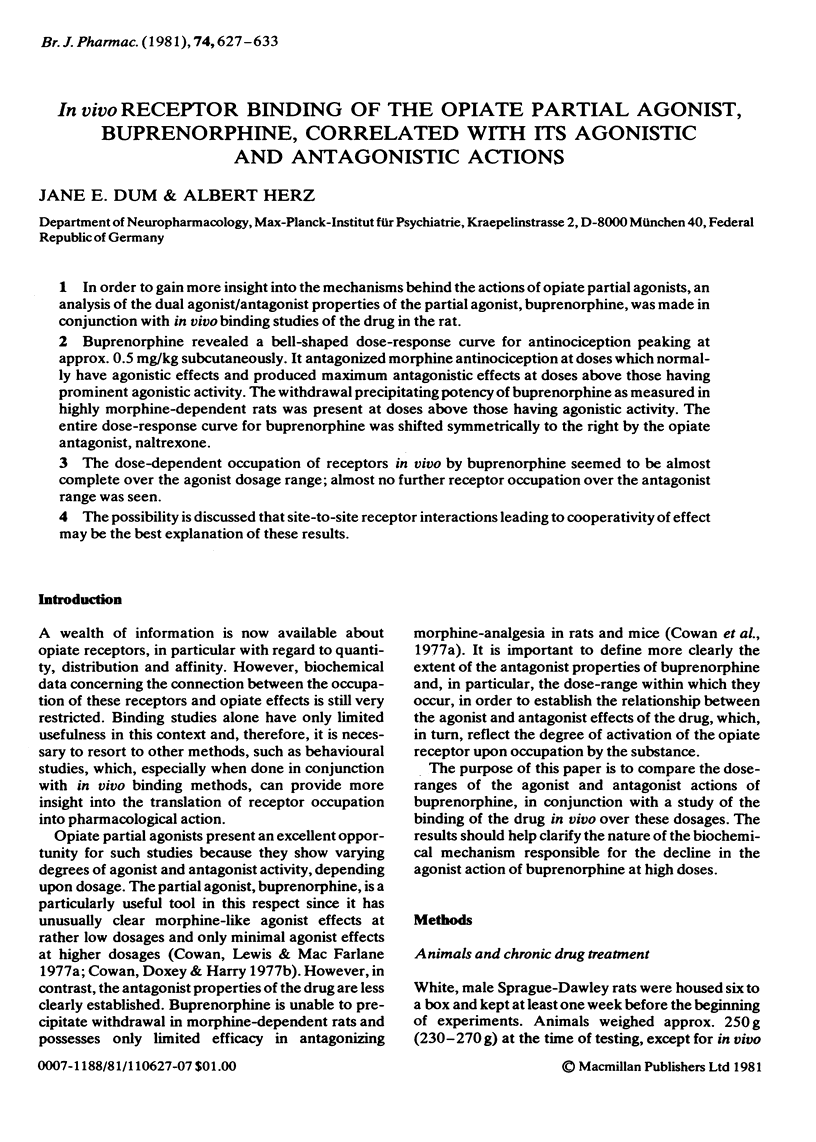
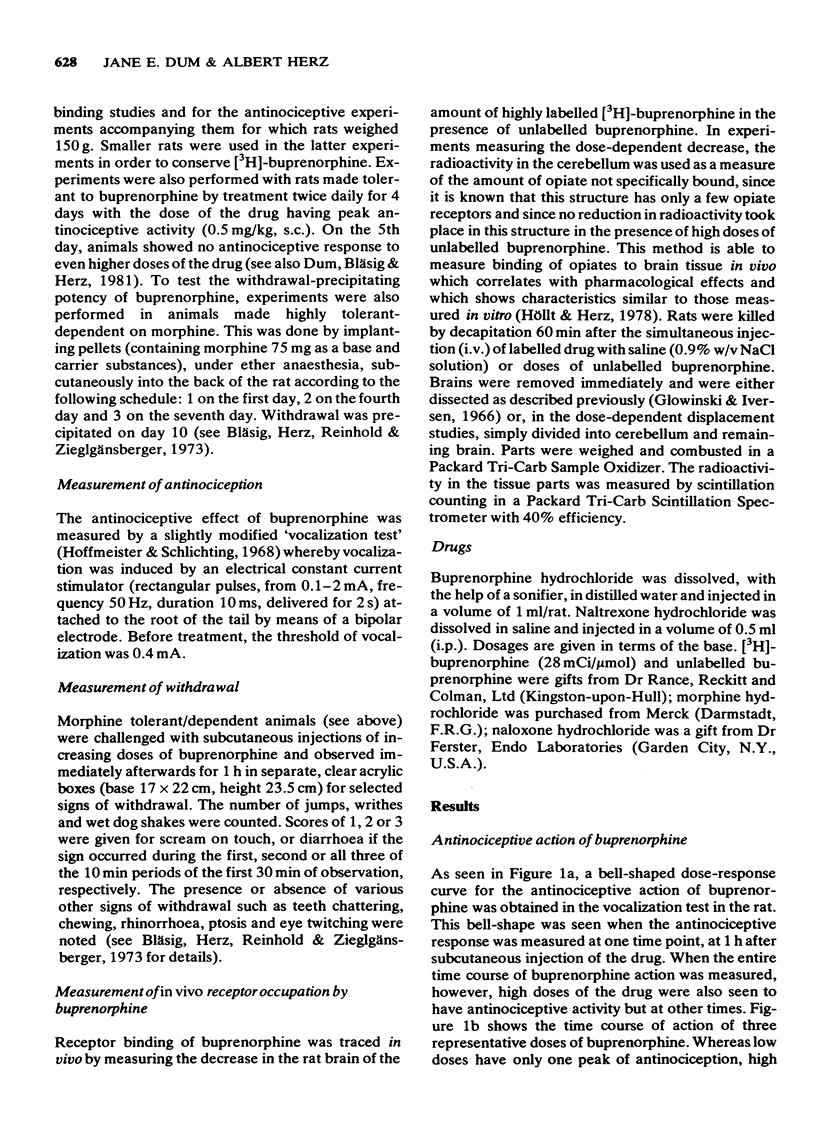
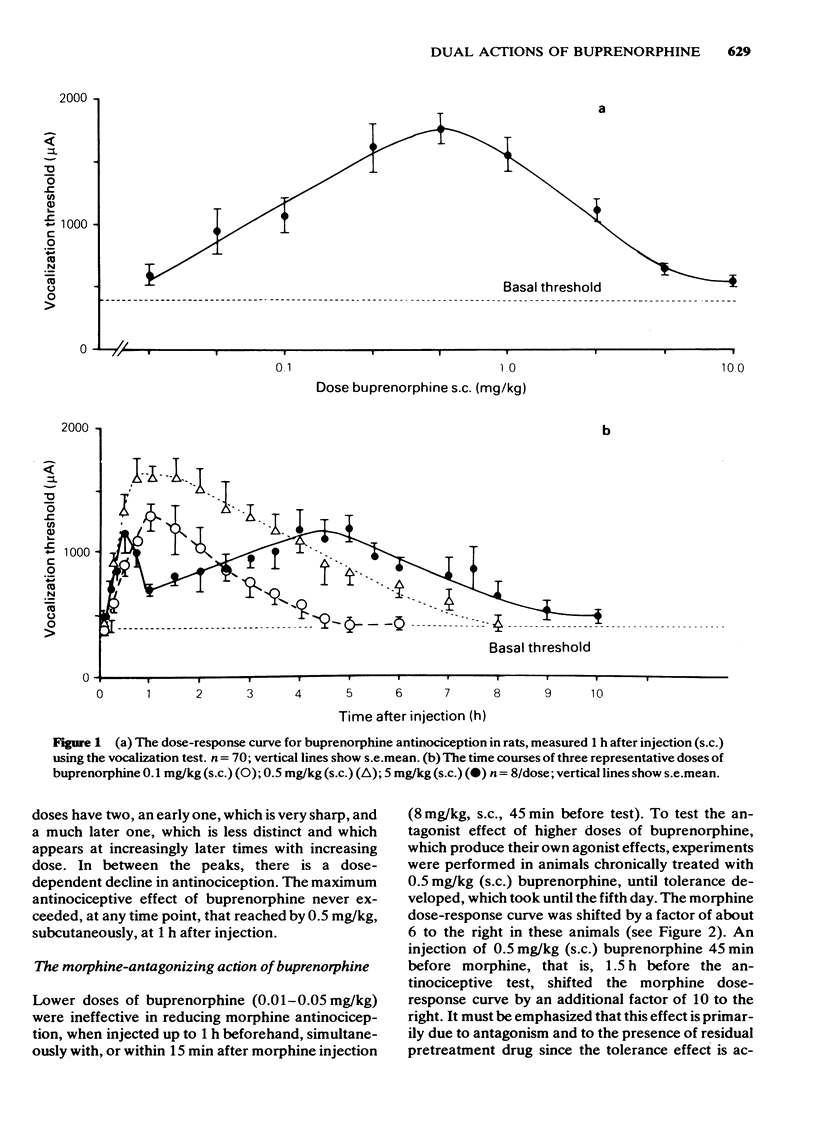
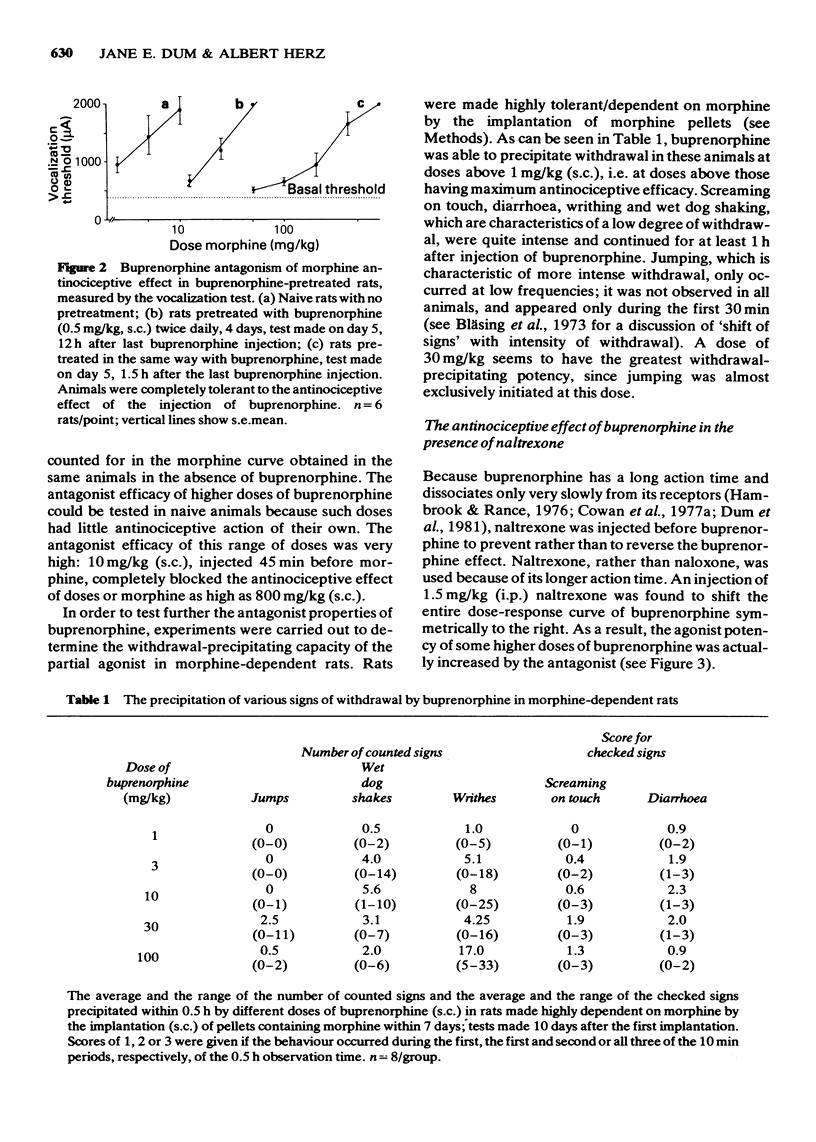
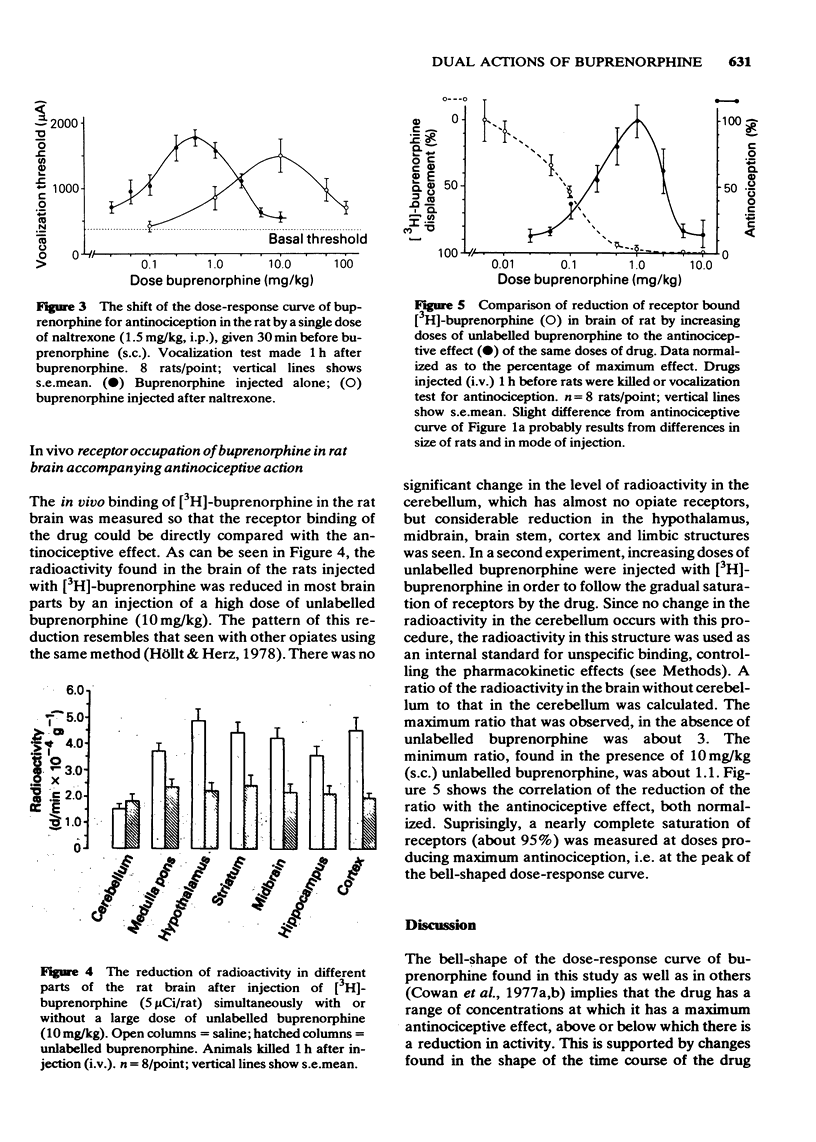
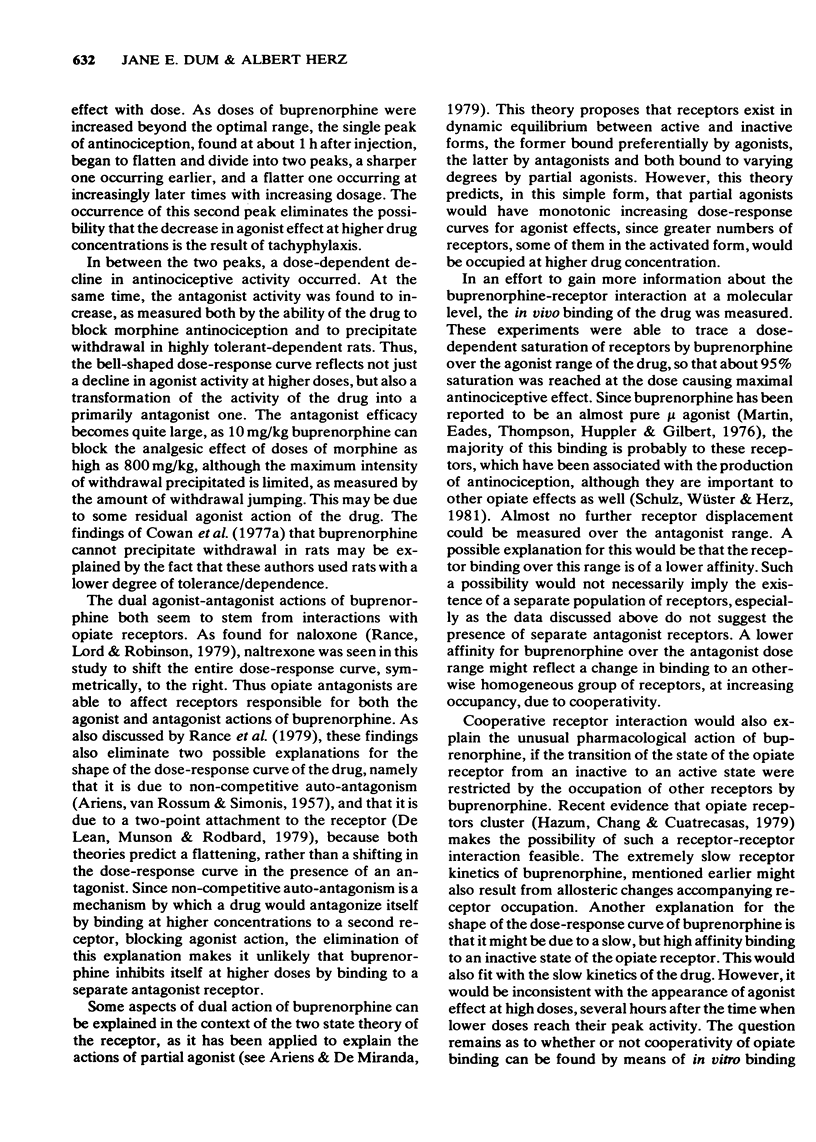
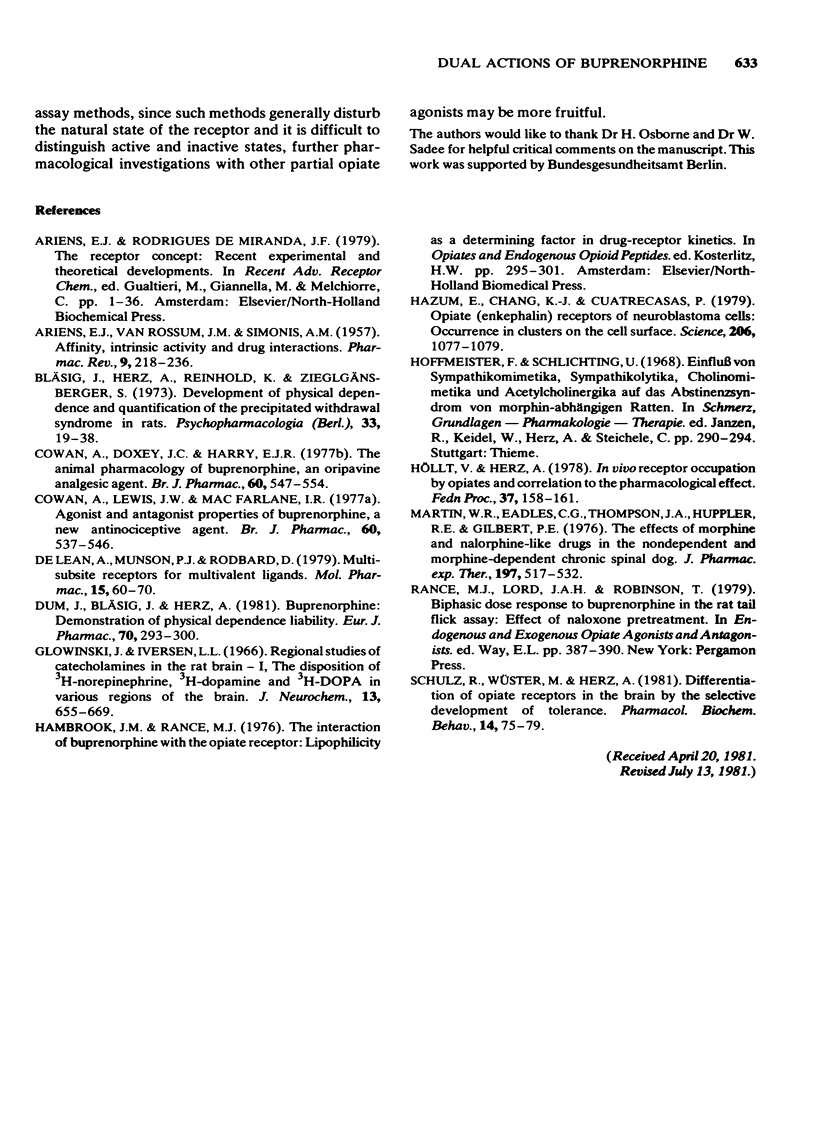
Selected References
These references are in PubMed. This may not be the complete list of references from this article.
- ARIENS E. J., VAN ROSSUM J. M., SIMONIS A. M. Affinity, intrinsic activity and drug interactions. Pharmacol Rev. 1957 Jun;9(2):218–236. [PubMed] [Google Scholar]
- Cowan A., Doxey J. C., Harry E. J. The animal pharmacology of buprenorphine, an oripavine analgesic agent. Br J Pharmacol. 1977 Aug;60(4):547–554. doi: 10.1111/j.1476-5381.1977.tb07533.x. [DOI] [PMC free article] [PubMed] [Google Scholar]
- Cowan A., Lewis J. W., Macfarlane I. R. Agonist and antagonist properties of buprenorphine, a new antinociceptive agent. Br J Pharmacol. 1977 Aug;60(4):537–545. doi: 10.1111/j.1476-5381.1977.tb07532.x. [DOI] [PMC free article] [PubMed] [Google Scholar]
- De Lean A., Munson P. J., Rodbard D. Multi-subsite receptors for multivalent ligands. Application to drugs, hormones, and neurotransmitters. Mol Pharmacol. 1979 Jan;15(1):60–70. [PubMed] [Google Scholar]
- Dum J., Bläsig J., Herz A. Buprenorphrine: demonstration of physical dependence liability. Eur J Pharmacol. 1981 Mar 26;70(3):293–300. doi: 10.1016/0014-2999(81)90163-1. [DOI] [PubMed] [Google Scholar]
- Glowinski J., Iversen L. L. Regional studies of catecholamines in the rat brain. I. The disposition of [3H]norepinephrine, [3H]dopamine and [3H]dopa in various regions of the brain. J Neurochem. 1966 Aug;13(8):655–669. doi: 10.1111/j.1471-4159.1966.tb09873.x. [DOI] [PubMed] [Google Scholar]
- Hazum E., Chang K. J., Cuatrecasas P. Opiate (Enkephalin) receptors of neuroblastoma cells: occurrence in clusters on the cell surface. Science. 1979 Nov 30;206(4422):1077–1079. doi: 10.1126/science.227058. [DOI] [PubMed] [Google Scholar]
- Höllt V., Herz A. In vivo receptor occupation by opiates and correlation to the pharmacological effect. Fed Proc. 1978 Feb;37(2):158–161. [PubMed] [Google Scholar]
- Martin W. R., Eades C. G., Thompson J. A., Huppler R. E., Gilbert P. E. The effects of morphine- and nalorphine- like drugs in the nondependent and morphine-dependent chronic spinal dog. J Pharmacol Exp Ther. 1976 Jun;197(3):517–532. [PubMed] [Google Scholar]
- Schulz R., Wüster M., Herz A. Differentiation of opiate receptors in the brain by the selective development of tolerance. Pharmacol Biochem Behav. 1981 Jan;14(1):75–79. doi: 10.1016/0091-3057(81)90105-2. [DOI] [PubMed] [Google Scholar]


